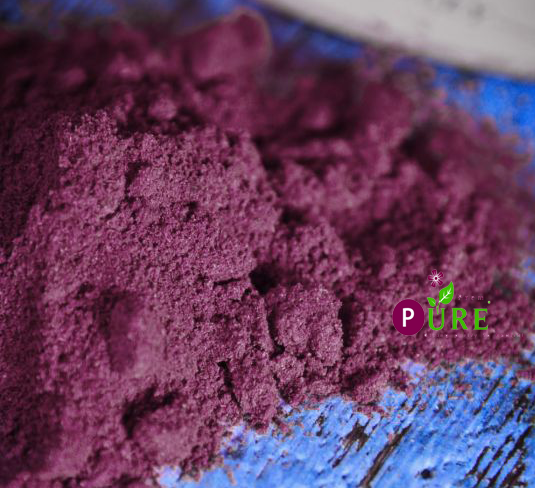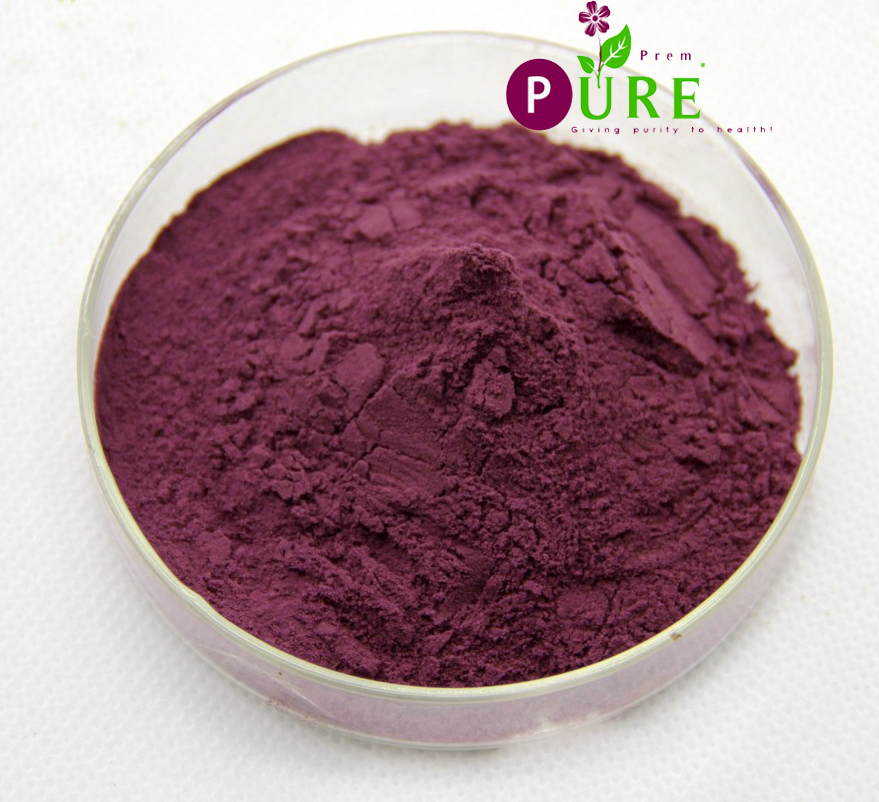Latin Name : Vaccinium uliginosum Linn.
Juice Powder ; Juice Concentrate

 Introduction
Introduction
Bilberries are any of several primarily Eurasian species of low-growing shrubs
in the genus Vaccinium (family Ericaceae),bearing edible, nearly black berries.
The species most often referred to is Vaccinium myrtillus L.,
but there are several other closely related species.
Bilberry fruits have a smooth, circular outline at the end opposite their point of attachment,
whereas blueberries retain persistent sepals there, leaving a rough, star-shaped pattern of five flaps.
Bilberries include several closely related species of the Vaccinium genus, including:
Vaccinium myrtillus L. (bilberry)
Vaccinium uliginosum L. (bog bilberry, bog blueberry, bog whortleberry, bog huckleberry, northern bilberry, ground hurts)
Vaccinium caespitosum Michx. (dwarf bilberry)
Vaccinium deliciosum Piper (cascade bilberry)
Vaccinium membranaceum (mountain bilberry, black mountain huckleberry, black huckleberry, twin-leaved huckleberry)
Vaccinium ovalifolium (oval-leafed blueberry, oval-leaved bilberry, mountain blueberry, high-bush blueberry).
Function
Bilberry has been used for centuries, both medicinally and as a food in jams and pies.
Bilberry fruit contains chemicals known as anthocyanosides, plant pigments
that have excellent antioxidant properties. They scavenge damaging particles
in the body known as free radicals, helping to prevent or reverse damage to
cells. Bilberry also contains vitamin C,which is another antioxidant.
Not many studies have been done to examine bilberry specifically.
Even fewer studies have been done in humans. Most of the suggestions
about bilberry's effectiveness come from research on similar antioxidants,
or from test tube and animal studies.
Bilberry extracts are used in Europe to treat this condition,
which occurs when valves in veins in the legs that carry blood to the heart
are damaged. Some studies have reported improvements in symptoms,
but most of the studies were poorly designed.
Bilberry leaves have traditionally been used to control blood sugar levels
in people with diabetes.
Animal studies have found that anthocyanosides may strengthen blood vessels,
improve circulation, and prevent the oxidation of LDL ("bad") cholesterol,
a major risk factor for atherosclerosis (plaque that blocks blood vessels,
leading to heart attack and stroke).
Bilberry has been used in European medicine for nearly a thousand years,
primarily to treat diarrhea. The fruit contains tannins,
substances that act as both an anti-inflammatory and an astringent
(constricting and tightening tissues). Bilberry is believed to help
people with diarrhea by reducing intestinal inflammation.
Anthocyanosides found in bilberry fruits may also be useful for people
with vision problems. Studies have shown mixed,mainly negative results, however. Bilberry has also been suggested as a treatment
for retinopathy (damage to the retina) because anthocyanosides appear to help
protect the retina. Bilberry has also been suggested as treatment to prevent
cataracts. However, studies are lacking in both areas.
1.Powerful antioxidants;
2.Helps protect the cells of the eye against free radical damage;
3.Improves circulation in the small blood vessels found in the eye;
4.Supports nighttime visual acuity, adjustment to darkness and restoration of visual acuity after exposure to glare.
5.It has been shown to enhance circulation to the extremities and throughout the veins of the leg.